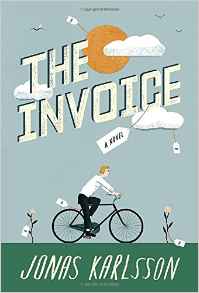The Oslo Conspiracy by Asle Skredderberget
 Friday, December 16, 2016 at 7:12AM
Friday, December 16, 2016 at 7:12AM 
First published in Norway in 2013; published in translation by St. Martin's/Thomas Dunne Books on October 25, 2016
In 1977, an Italian naval ship sinks after an explosion. More than 20 years later, Ingrid Tollefsen is strangled in her hotel room in Rome. How those two events are related is the question that the reader is invited to ponder as The Oslo Conspiracy unfolds.
As a financial crimes investigator, Milo Cavalli doesn’t usually get involved in murder investigations, but the Italian police won’t release Ingrid’s body until Oslo sends a detective to Rome, and Milo, who has ties to Italy, happens to be available. Coincidentally — or not — Ingrid’s younger brother Tormod was killed in a school shooting in Oslo two years earlier.
Ingrid was employed in the pharmaceutical industry and Tormod had an ampoule of steroids in his hand when he died. Those facts lead Milo on an investigation of Ingrid’s uncooperative employer, a company that refuses to disclose the nature of her research projects. Milo also noses around gym rats who smuggle steroids and encounters a witness in Tormod’s case who is trying to avoid deportation from Norway.
Ingrid might also have been having an affair. All of that adds up to several potential but vague motives to do away with Ingrid. The reader follows Milo and he bounces around Oslo, Rome, and New York in pursuit of clues. The multiple plotlines are juggled with care. The story is moderately complex but not confusing. The plot didn’t captivate me, but it sustained my interest.
Milo has a girlfriend in Italy but he doesn’t want to give up his job in Oslo, even though he has enough wealth to live without working. Milo spends a good bit of time obsessing about other women (hey, he's Italian), which periodically sends him to confession (again,he's Italian), where he argues about morality with a priest. I suppose the relationship drama serves to give Milo some depth, but Milo’s relationship with his family members is more intriguing, given its tie-in to the novel’s plot elements.
The novel is interesting for many reasons, not least for its penetrating look at the pharmaceutical industry. Asle Skredderberget’s portrayal of Norway’s response to immigrants who overstay visas is timely, given the American debate about undocumented immigrants. The political dimensions of the story aren’t heavy-handed and they never get in the way of Skredderberget’s storytelling. The Oslo Conspiracy isn’t the most thrilling example of Scandinavian crime fiction I’ve encountered, but the story is credible and its leisurely pace allows the plot and characterizations to develop in a meaningful way.
RECOMMENDED
 TChris |
TChris |  Post a Comment |
Post a Comment |  Asle Skredderberget,
Asle Skredderberget,  Norway in
Norway in  Thriller
Thriller 


